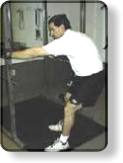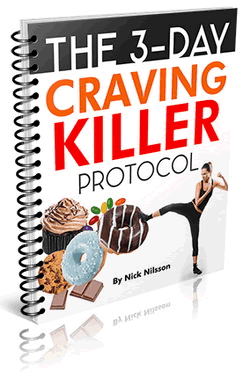Stretching is an important component of fitness for beginning and advanced trainers alike.

Good flexibility allows your muscles to work in a greater range of motion, can prevent injury, can ease muscular pain, helps speed recovery and is also a good way to cool down after weight training.
- Stretching can be done before the workout, between sets and after the workout.
- When stretching before the workout, do it only lightly as the muscles are not warmed up yet and therefore not as pliable.
- Immediately after your workout, when your muscles are warm and limber, is the best time to stretch for improving your flexibility.
- Hold stretches for 2 to 3 sets of 20 to 60 seconds to get the full benefit. Holding for less than 20 seconds will give you a temporary increase in range of motion while stretching for 20 or more seconds affects the plastic, permanent aspect of the muscles and connective tissue.
- Do not stretch past the point of pain and do not do stretches that are dangerous or cause pain.
1. Back Stretch
Hold onto a rail, pole, bar, etc., with one hand. Rotate your body inwards towards that hand then allow your weight to fall backwards.

You can adjust where the stretch affects in your back by standing more upright or bending over more. Staying more upright will target the upper/middle back while leaning over will hit the lower side and back area.
2. Chest Stretch
Stand beside a vertical pole or wall with your arm straight out to the side and holding on. Bend your elbow slightly then rotate your body away from your hand. Keep your shoulder back and your chest puffed out.
3. Front Thigh - Quadriceps Stretch
Kneel on the floor on one knee with your front leg and your back leg bent at 90 degrees. From this position lean back somewhat, pushing your stretching-side hip forward and leaning your upper body back.
- You should feel the stretch in your back leg from your hip flexors (the muscles that are located around your hip bone which bring the thigh up towards the abdomen) right down to your lower quads by your knee.
4. Hamstring Stretch - The Back of the Thighs
Put your foot up on a bench or raised surface that you are standing in front of.
- Hold onto something for balance if you need to.
- Lean over and try to touch or grab your foot.
- Keep your lower back arched as you lean over for the greatest stretch.
5. Shoulder Stretch
Pull your arm straight across in front of your chest and push it into your chest with your other arm. This stretch affects the rear and side aspects of the shoulder.
6. Biceps Stretch - Front of the Upper Arms
Put one hand on a wall or pole with your arm straight out to the side, then rotate your body away from your arm like in the chest stretch. To affect your biceps more, keep your arm straight and bend your wrist back a little.
7. Triceps Stretch - Back of the Upper Arms
Raise one arm overhead then bend it down at the elbow as though trying to scratch your back. Use your other arm to push your stretching arm backwards slightly.
- Be careful with this stretch not to pull your upper arm past vertical behind the head to the other side. This overstretches the shoulder joint
8. Calf Stretch
Stand on one foot on a wood block or other raised surface (the calf machine is good) on the balls of that foot.
- Rest all your weight on the one foot in the stretch position (heel down)
- Keep your knee as far back and locked out as possible (you may wish to push on it with your hand or with your other leg crossed over in front).

Basic Nutrition for Health and Fitness
![]()
More From Fitstep.com
Share This Page...
---
Home -> Fitness For Beginners -> Where to Start -> Simple Stretches



